tissue
Latest

Scientists bioprint living tissue in a matter of seconds
Bioprinting holds great potential for repairing injuries, testing drugs or replacing whole organs, but it's currently limited in complexity, viability and speed -- you can't just create tissue on a whim. Soon, though, it might be a matter of crafting whatever you need when you need it. Scientists at EPFL and University Medical Center Utrecht have developed an optical system that can bioprint complex, highly viable living tissue in "just a few seconds." It would represent a breakthrough compared to the clunky, layer-based processes of today.
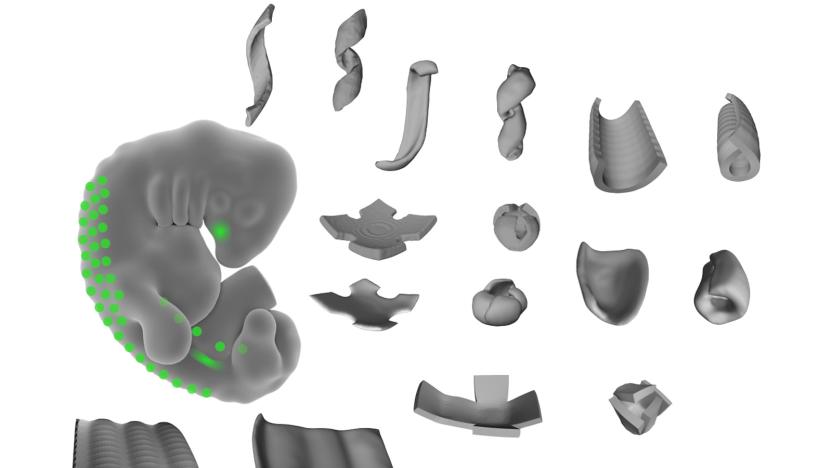
Scientists 'hack' cells to create 3D shapes from live tissue
Never mind 3D-printing organs -- the real dream is to make the tissue itself bend to your will, and UCSF scientists have managed just that. They've discovered that they can 'hack' special cells that help fold tissue (mesenchymal cells) to create 3D shapes out of live tissue. The trick is to lay out these cells in specific patterns that "tug" on other cells' extracellular matrix fibers. You can create surprisingly diverse items, ranging from simple bowls and ripples to decidedly unnatural items like cubes and coils.
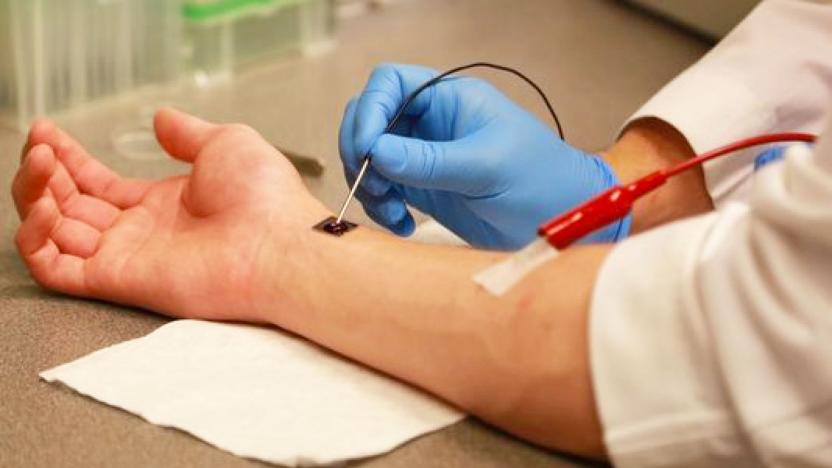
Fingernail-sized chip can repair damaged tissue in seconds
A new device can begin repairing damaged organs in seconds, heralding a major breakthrough for life-saving medicine. Developed at Ohio State University, the technology known as tissue nanotransfection (TNT) uses a small coin-sized silicon chip that "injects" genetic code into skin cells, converting them from one type to another.
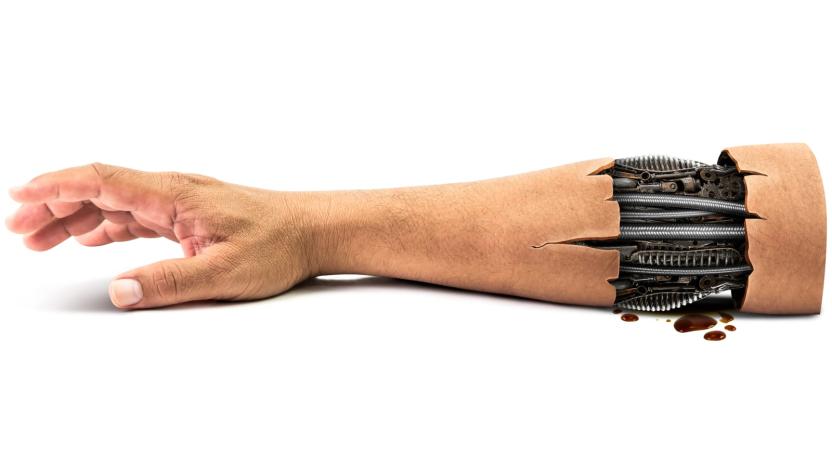
Robots could wear flesh to help form transplants
Right now, you have to grow human transplants in a stationary environment. That's more than a little dangerous when they could buckle under the stresses of a real body. Oxford University may have a clever (if slightly ghastly) solution to that problem: have robots wear the tissue first. If you grow muscles on humanoid robots, the movement and overall shape of those machines would lead to grafts and transplants that are ready for serious strain.
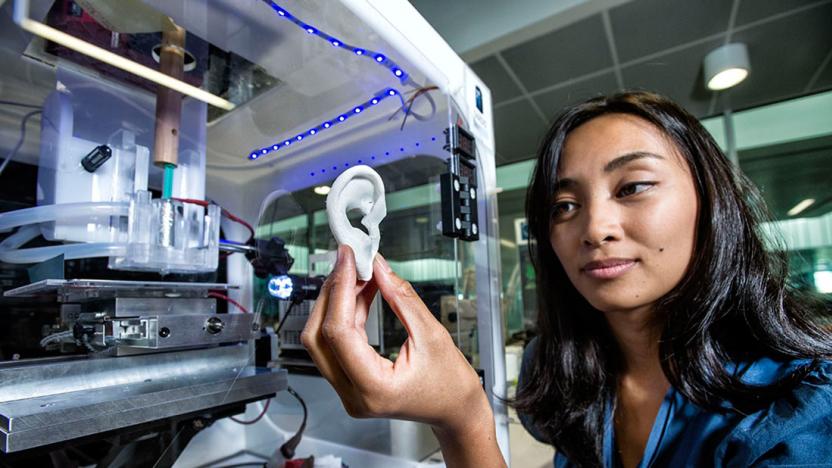
Hospital to get first dedicated 3D tissue-printing facility
You still can't get a 3D-printed liver transplant made from your own cells, but an Australian hospital is trying to push the tech into the mainstream. The Queensland University of Technology (QUT) in Brisbane is building a dedicated "biofabrication" space where doctors and researchers can develop tech to model and print cartilage, bone and other human tissue. "It will be the first time a biomanufacturing institute will be co-located with a high-level hospital," said Australian Minister of Health Cameron Dick.
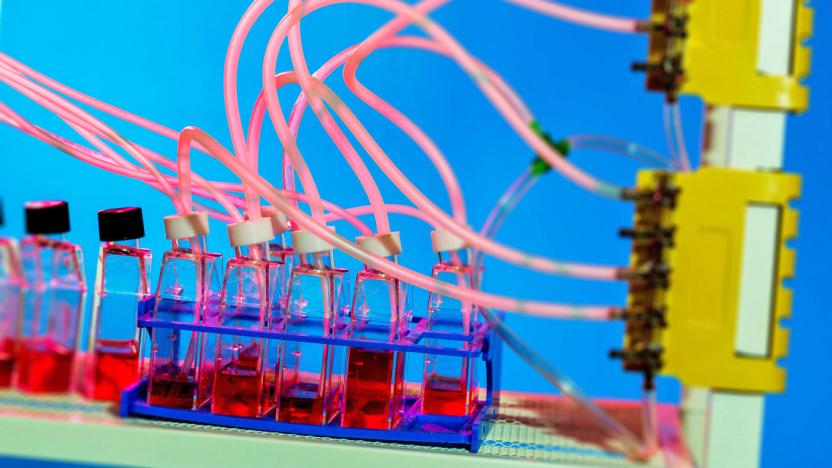
US pours $160 million into making tissues and artificial organs
Getting a viable organ transplant is a real problem. There are only so many donors to go around, and the organs that do show up might be tossed out if they're not used within a matter of hours. The US government isn't satisfied with this state of affairs, though. As part of a broader effort to reduce organ waiting lists, it's unveiling $160 million in public-private investments for a new Advanced Tissue Biofabrication Manufacturing Innovation Institute. The organization will develop techniques for repairing and replacing tissues that could lead to artificial organs. Simply speaking, you wouldn't need someone to donate an organ -- doctors could either fix damaged parts or transplant an artificial organ created on demand.
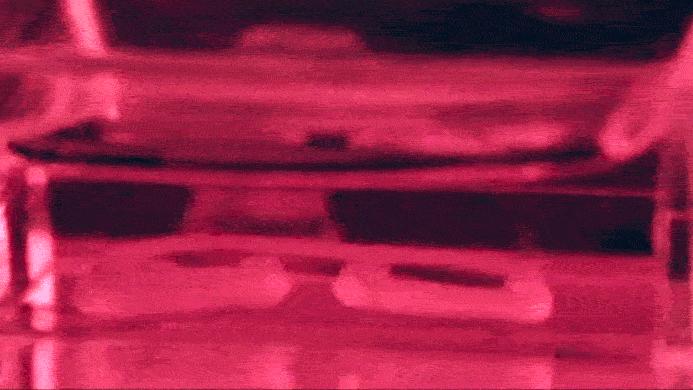
Watch tissue-based robots move in response to light
Researchers have modified muscle cells to move in response to light, which could eventually result in "bio-bots" useful for health or environmental applications. The breakthrough was made possible by the rapidly expand field of optogenetics, in which algae genes are spliced with muscle tissue from mice to make it sensitive to blue light. The team from the University of Illinois started with a 3D-printed hydrogel skeleton, then looped a ring of the modified tissue around. By firing a flash intermittently, they were able to make the muscle move, and even "exercise" it to become stronger.
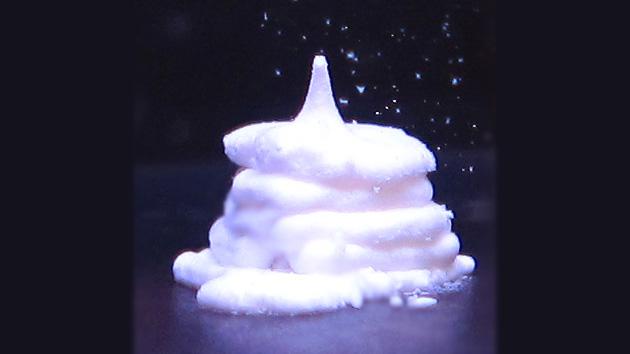
Genetic 'glue' helps make 3D-printed organs
No, you're not looking at a dessert gone horribly wrong -- that might just be the future of synthetic organ transplants. Scientists at the University of Texas at Austin have developed a genetic "glue" that forms gels useful for 3D printing organic tissues. The key is using custom-designed, complementary DNA strands that bond just the way you'd like them. This flexibility would let hospitals and labs create organs that grow in a specific way, and take on specific structures. In short, it'd be relatively easy to print the exact organ you need, and even customize it for the recipient if necessary.

Harvard scientists grow human cells onto nanowire scaffold to form 'cyborg' skin
Growing human tissue is old hat, but being able to measure activity inside flesh is harder -- any electrical probing tends to damage the cells. But a new breakthrough from Harvard researchers has produced the first "cyborg" tissue, created by embedding functional, biocompatible nanowires into lab-grown flesh. In a process similar to making microchips, the wires and a surrounding organic mesh are etched onto a substrate, which is then dissolved, leaving a flexible mesh. Groups of those meshes are formed into a 3D shape, then seeded with cell cultures, which grow to fill in the lattice to create the final system. Scientists were able to detect signals from heart and nerve cell electro-flesh made this way, allowing them to measure changes in response to certain drugs. In the near-term, that could allow pharmaceutical researchers to better study drug interaction, and one day such tissue might be implanted in a live person, allowing treatment or diagnosis. So, would that make you a cyborg or just bionic? We'll let others sort that one out.

Flexible, implantable LEDs look set to start a new body modification craze
LED lights are cool, you're cool, why not combine the two, right? We doubt that's quite the reasoning that led to this international research project, but it's certainly an appealing way to look at it. Our old buddy John Rogers from the University of Illinois at Urbana-Champaign has headed up a research team with participants from the US, China, Korea, and Singapore, who have together produced and demonstrated a new flexible and implantable LED array. Bettering previous efforts at inserting lights under the human skin, this approach allows for stretching and twisting by as much as 75 percent, while the whole substrate is encased in thin silicon rubber making it waterproof. Basically, it's a green light to subdermal illumination, which could aid such things as monitoring the healing of wounds, activating light-sensitive drug delivery, spectroscopy, and even robotics. By which we're guessing they mean our robot overlords will be able to color-code us more easily. Yeah, that must be it.

Invetech 3D bio-printer is ready for production, promises 'tissue on demand'
Say hello to "the world's first production model 3D bio-printer." What you're looking at is a machine capable of arranging human cells and artificial scaffolds into complex three-dimensional structures, which result in such wonderful things as replacement liver and kidney tissue, or such simple niceties as artificially grown teeth. All we're told of the internal workings is that the bio-printer utilizes laser-calibrated print heads and that its design is the first to offer sufficiently wide flexibility of use to make the device viable. Organovo will be the company responsible for promoting the new hardware to research institutions, while at the same time trying to convince the world that it's not the fifth sign of the apocalypse. Maybe if the printer didn't have a menacing red button attached to it, we'd all be a little less freaked out by it.

Queue queue moar noob
It's 10:40 p.m. EST on my server and there is a 30 minute wait to login with a queue of over 300. Oh me oh my, time to get out my BlizzCon goodie bag and head for the QQ n00b tissues.Many users across most of the servers, both in the U.S. and E.U., are reporting long queues again. While the population always seems to uptick around this time of year, one has to raise an eyebrow at this happening a second time in as many months.November was understandable. Wrath was a big deal. But after a week or so the queues died down. Is this just the second insurgent of Wrath's wrath?One can surmise that a large number of people received Wrath as a Christmas gift. The assumption is probably correct. Another popular theory is that with all the vacation time on folk's plate right now, people are using it to log into the game and enjoy a bit of Northrend adventuring.

World of WarCrafts: Alliance QQ Nullifier
Every Thursday, Shelbi Roach of The Bronze Kettle guides you in creating WoW-inspired crafts using real world mats with World of WarCrafts.There seems to be an observed Horde bias here at WoWInsider, especially within the World of WarCrafts column. So today we're going to focus on a craft that should be a perfect fit for the Grand Alliance. I present you with the Alliance QQ Nullifier.Here is what you will need: Wood Tissue Box Acrylic Paint (metallic gold and blue) Paint Brushes Pencil Card stock Click on the images below to view a gallery of step-by-step instructions. %Gallery-32663%

Colorizing technology highlights cancerous tissue
In operating rooms today, cancer surgeons are essentially forced to operate without any definitive way of determining whether or not 100% of the diseased tissue has been removed. Thanks to a radical invention by researchers in Massachusetts, that huge limitation could soon be a thing of the past. A new system, dubbed FLARE (Fluorescence-Assisted Resection and Exploration), involves a near-infrared (NIR) imaging system, a video monitor, and a computer. These tools are used to see special chemical dies (christened NIR fluorophores) that are crafted to "target specific structures such as cancer cells when injected into patients." When these dyes are exposed to NIR light, the cancer cells light up, giving doctors an easy look at what they have left to remove. The team is gearing up to showcase the technology at the American Chemical Society national meeting in Philadelphia -- here's hoping it can be put to good use in the very near future.

Researchers develop artificial nerve
Regular nerves getting you down? Why not try a bionic nerve? According to reports, researchers at the University of Michigan have developed an artificial nerve which could have the ability to bring damaged limbs and organs back to life. In a study published in the medical rag Experimental Neurology, Dr. Paul Kingham and his team at the UK Centre for Tissue Regeneration managed to take fat tissue from adult animals and differentiate them into nerve cells to be used for repair and regeneration. The team will repeat the study with human volunteers, and then develop an artificial nerve constructed from a biodegradable polymer. The "bio-material" will be rolled into a tube-like structure and inserted between two cut nerves, so that regrowing nerve fibers can spread from one end to the other. Next, the researchers hope to create a species of tyrannical man-bots called the Borg, whom they hope will move outward through the galaxy, assimilating all who stand in their way.[Via Slashdot]

Intelligent micro-drill carefully delves through tissue
While the idea of a robotic surgeon always makes us a bit weary, a new micro-drill crafted in the UK is earning its stripes (and the public's trust) the old fashioned way: by executing its duties without harming someone. The intelligent medical drill was developed by Peter Brett and colleagues at the University of Aston and David Proops, a surgeon at University Hospital Birmingham, and is "used to bore small holes in the side of a patient's head so that a surgeon can install an implant." Aside from being just slightly creeped out at that imagery, a surgical device that has worked perfectly in three actual operations demands respect, as the device has successfully allowed doctors to "give profoundly deaf patients cochlear implants." This device stands out due to its uncanny ability to sense pressure, torque, and force, and can automatically shut down if it feels it's going to pierce a membrane that shouldn't be punctured -- and for all you fellows who greatly prefer your hair over just about anything, we're sure the implant industry is already checking into it.[Via NewScientistTech]

InterRobot's tissue-dispensing robot smiles while you sneeze
Let's face it, not everyone has the technical abilities to convert their Xbox 360 into a tissue dispenser, and moreover, it's not the most portable method of carrying around sniffle rags. Never fear, however, as the nation so well known for kicking out robotic servants is at it yet again, and this time around InterRobot Inc. is offering up a mechanical being to serve up handy tissue packs to the ill public that it runs into. The Mospeng-kun robot sports a human-esque design, the ability to wheel around and meet sickly individuals, and a continually smiling face that greets folks before personally handing them a pack of nose napkins. No word on what else the company plans on dispensing care of robotic employees, but considering they'll run you (or your business) around $835 for a five day rental, we'd probably reserve this option solely for the flu season.[Via CNET]

Xbox 360 case mod oddity of the month
We've kind of tapered off on Xbox 360 case mod coverage, since beyond a bit of paint here and a large fan there, where are you going to go? Well, a friendly Engadget tipster finally answered that question with the "Xbox 360 Tissue-Dispensing Alarm Clock Case Mod." Featuring not only intense tissue-dispensing action, but a snazzy EL-based alarm clock, the Xbox 360 case mod sheds all such constraints such as "functionality" and "reason" for a case mode made especially in our honor. Fitting, no?[Thanks, Jordan]Read - Pic 1, Pic 2 and Pic 3




